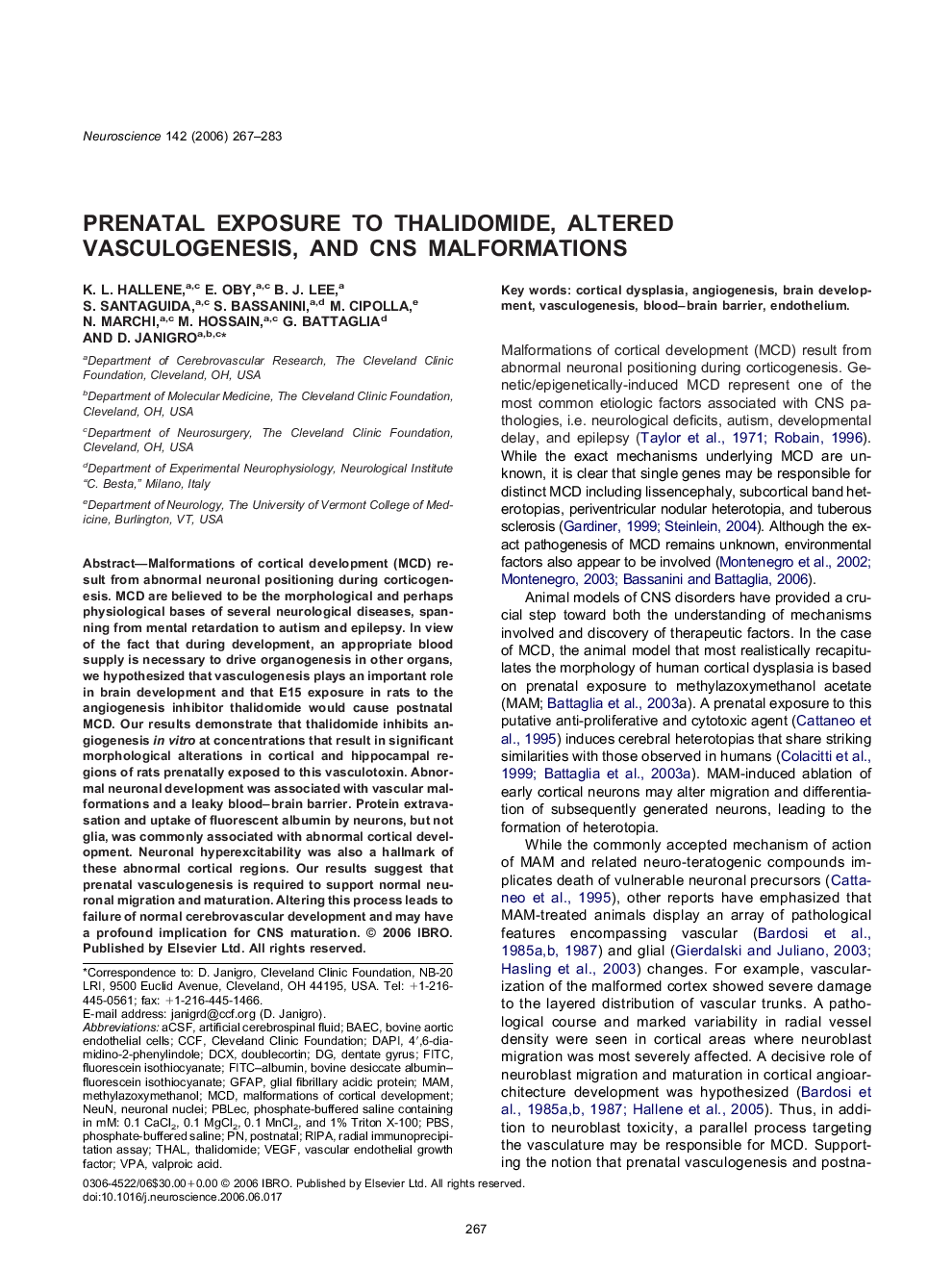| Article ID | Journal | Published Year | Pages | File Type |
|---|---|---|---|---|
| 4342457 | Neuroscience | 2006 | 17 Pages |
Abstract
Malformations of cortical development (MCD) result from abnormal neuronal positioning during corticogenesis. MCD are believed to be the morphological and perhaps physiological bases of several neurological diseases, spanning from mental retardation to autism and epilepsy. In view of the fact that during development, an appropriate blood supply is necessary to drive organogenesis in other organs, we hypothesized that vasculogenesis plays an important role in brain development and that E15 exposure in rats to the angiogenesis inhibitor thalidomide would cause postnatal MCD. Our results demonstrate that thalidomide inhibits angiogenesis in vitro at concentrations that result in significant morphological alterations in cortical and hippocampal regions of rats prenatally exposed to this vasculotoxin. Abnormal neuronal development was associated with vascular malformations and a leaky blood-brain barrier. Protein extravasation and uptake of fluorescent albumin by neurons, but not glia, was commonly associated with abnormal cortical development. Neuronal hyperexcitability was also a hallmark of these abnormal cortical regions. Our results suggest that prenatal vasculogenesis is required to support normal neuronal migration and maturation. Altering this process leads to failure of normal cerebrovascular development and may have a profound implication for CNS maturation.
Keywords
PBSBAECVPAMCDRIPANeuNDcxaCSFDAPIMAMCCFGFAPFITC4′,6-diamidino-2-phenylindoleAngiogenesisEndotheliumCleveland Clinic FoundationThalidomideThaldoublecortincortical dysplasiaBrain developmentBlood–brain barrierBovine aortic endothelial cellsdentate gyrusVascular endothelial growth factorVascular Endothelial Growth Factor (VEGF)fluorescein isothiocyanateartificial cerebrospinal fluidmethylazoxymethanolPhosphate-buffered salineMalformations of cortical developmentneuronal nucleiVasculogenesisValproic acidGlial fibrillary acidic proteinPostnatal
Related Topics
Life Sciences
Neuroscience
Neuroscience (General)
Authors
K.L. Hallene, E. Oby, B.J. Lee, S. Santaguida, S. Bassanini, M. Cipolla, N. Marchi, M. Hossain, G. Battaglia, D. Janigro,
